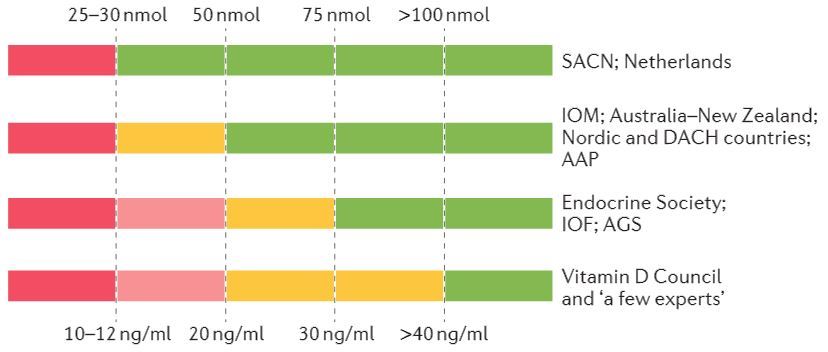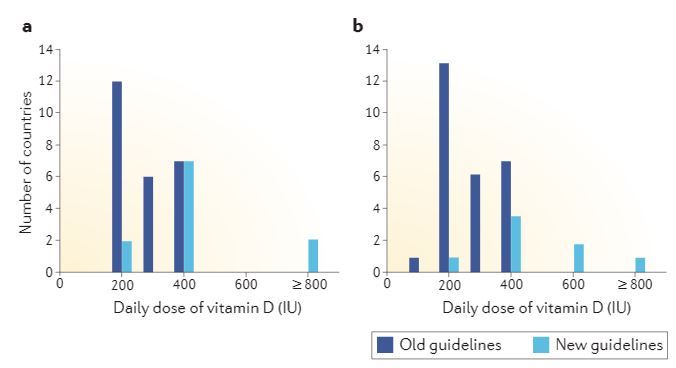Review of vitamin D recommendations around the world
Comparative analysis of nutritional guidelines for vitamin D
Nature Reviews Endocrinology (2017), Published online 07 April 2017
doi:10.1038/nrendo.2017.31
Roger Bouillon
From ReadCube: Rent PDF for $5, buy it for $10

Red = severe deficiency, must be corrected
Orange = mild deficiency, should be corrected
Green = sufficient, no more is needed
(Optimal is not shown)
Endocrine Society Recommentations
IOF = International Osteoporosis Foundation 📄 IOF Position statement of 2010 is on VitaminDWiki
AGS = American Geriatric Society Recommendations
Number of countries recommending each dose for infants and children/youths
age 0-1 age 4-18

Vitamin D is essential for calcium and bone homeostasis. Humans are largely dependent on UVB-radiation-induced photosynthesis of vitamin D, as few foods contain vitamin D. However, the same radiation that produces vitamin D is also carcinogenic, albeit with a long lag time, and causes DNA damage. In view of the increasing life expectancy, avoiding excessive sun exposure is prudent. Several groups of people have a shortfall between their requirements for vitamin D and their combined endogenous synthesis and intake from natural foods, and therefore need vitamin D supplementation. Governments and scientific societies are regularly updating their recommendations for intake of vitamin D, especially for groups that should (infants) or prefer to (especially elderly individuals) avoid direct sunlight. An overview of such guidelines is presented in this Review.
A fairly large consensus exists that all infants should receive 400 international units (IU) (10 μg) daily during their first year of life and that elderly individuals should have access to vitamin D supplementation (at recommended dosages varying from 400 IU to 800 IU daily in most governmental guidelines but at higher dosages in other guidelines).
All guidelines unanimously agree that serum levels of 25-hydroxyvitamin D (25OHD) <25 nmol/l (10 ng/ml) should be avoided at all ages. Children and adults who have limited sun exposure should receive vitamin D supplementation, but the recommended doses vary widely (from 200 IU to 2,000 IU daily) , in line with disagreement regarding the minimal desirable serum concentration of 25OHD (which varies from 25 nmol/l to >100 nmol/l ).
